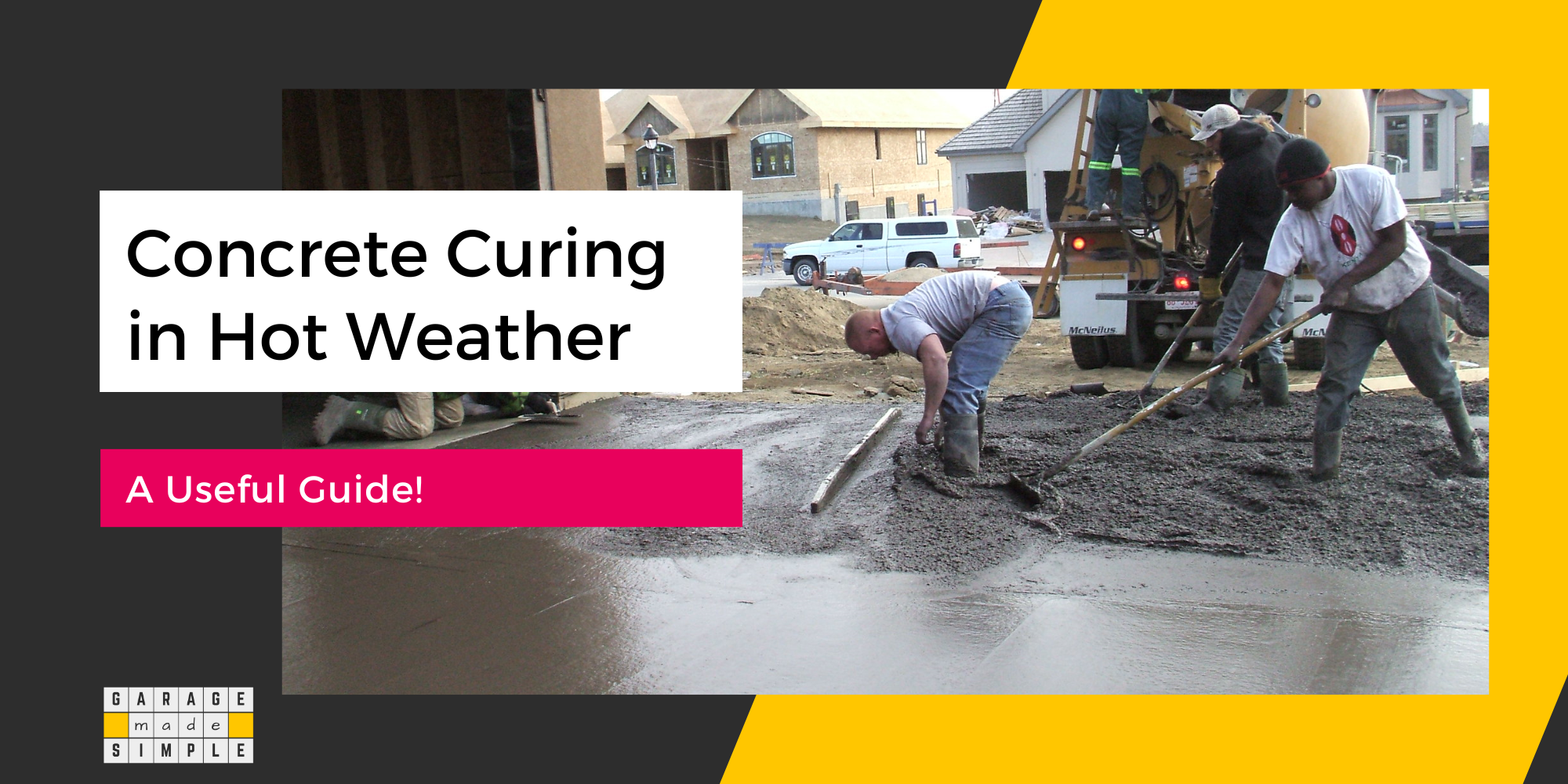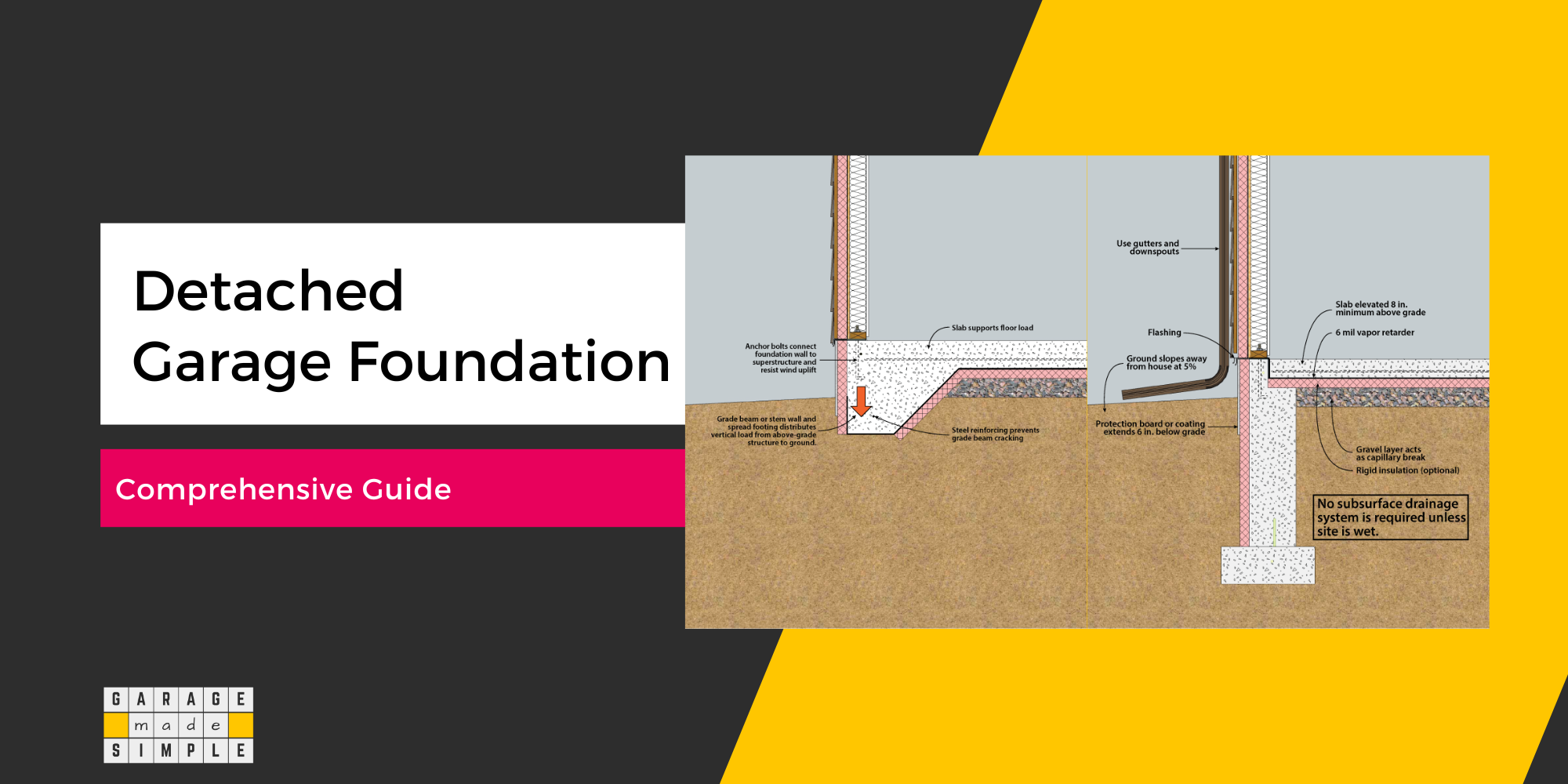Concrete Slab Curing Time and the Perfect Curing Process!
As an Amazon Associate, I earn from qualifying purchases.
What is the 4-inch Concrete Slab Curing Time?
The 4-inch concrete slab curing time is about 28 days.

Here’s what you need to know as a homeowner building a detached garage:
Fresh concrete is sensitive and can be easily ruined. Concrete curing is the process by which the wet concrete gradually loses water and gains strength. However, the curing process takes time and requires certain concrete curing conditions to be met.
Proper curing ensures it becomes strong and reliable. Neglecting it will lead to problems like cracking and low strength.
The curing process involves maintaining the right temperature and dampness. For the first week, keep the concrete surface wet to prevent moisture loss. This prevents cracking and ensures durability.
Here are the key timeframes:
- 24 to 48 hours: Forms can be removed, and you can walk on the surface.
- 7 days: Light vehicle and equipment traffic is okay.
- 28 days: The concrete is fully cured and ready for heavy use.
During the first 7 days, spray the slab with water 5-10 times per day. This keeps the concrete saturated and controls the rate of water evaporation.
After 28 days, the concrete slab will be strong and stable, ready for any heavy vehicles and further finishing like painting or staining.
Proper curing improves strength, durability, and resistance, ensuring a high-quality finish for years to come.
What is Concrete Curing?
Concrete curing is the process of maintaining adequate moisture and temperature conditions to ensure concrete develops strength and durability. Here’s what you need to know as a homeowner planning to build a detached garage:
Concrete sets and hardens as a result of a chemical reaction between cementitious materials and water. This process is called hydration. Curing is the process of maintaining satisfactory temperature and moisture conditions in concrete long enough for hydration to develop the desired concrete properties. The potential strength and durability of concrete will be fully developed only if concrete is properly cured.
American Concrete Institute
Curing starts immediately after the concrete is placed and finished. It involves keeping the concrete moist and at the right temperature, both at the surface and at depth, for extended periods.
Proper curing ensures that the concrete has enough moisture for hydration, which is the chemical reaction between cement and water. This reaction allows crystals to grow, intertwining and binding the mix, which increases strength and stability.
The curing period depends on factors, such as the concrete mix, desired strength, slab dimensions, and weather conditions, (particularly ambient temperature and relative humidity).
Concrete curing serves three main purposes:
- Retains moisture: Prevents the concrete from drying out too quickly, allowing it to gain strength.
- Delays drying shrinkage: Ensures the concrete is strong enough to resist shrinkage cracking.
- Improves overall quality: Enhances strength, durability, water tightness, and wear resistance.
When Should You Start Curing Concrete?
Start curing concrete immediately after placing and finishing. As soon as concrete is placed, the hydration process begins.
Concrete curing involves maintaining moisture and temperature to ensure proper hydration. Without adequate curing, concrete won’t reach its designed strength and will be prone to cracks and durability issues.
Curing should be done in three stages:
Initial Curing:
Initial curing begins right after the concrete is placed. If the surface starts to dry faster than bleed water rises, start initial curing to prevent plastic shrinkage cracks. This can be done by fogging or misting the surface.
Intermediate Curing:
Intermediate curing takes place after finishing but before the concrete sets completely. Use a liquid membrane-forming compound to reduce evaporation if direct water application isn’t possible as yet.
Final Curing:
Final curing starts after the concrete has reached its final set, usually within six to eight hours. Keep the surface moist using methods such as ponding, saturated burlap, or water sprays for at least seven days.
How to Cure a Concrete Slab?
To cure a concrete slab, follow these essential steps to ensure it achieves its maximum potential strength and durability:
Start Immediately After Placement:
- Proper Hydration: Begin curing as soon as the concrete is placed and finished. Concrete must maintain adequate moisture and temperature to ensure proper hydration.
Use Water Retaining Methods:
- Spraying Water: Regularly spray the surface with water to keep it moist. This prevents the surface from drying out too quickly, which can lead to cracks.
- Ponding: Create a small dam around the slab and flood the area with water. This method is effective for large, flat surfaces.
- Fogging: Use a fogging nozzle to apply a fine mist over the concrete, maintaining surface moisture without over-saturating it.
Apply Impermeable Membranes:
- Liquid Membranes: Apply a curing compound that forms a vapor seal on the surface. Options include water-based, resin-based, or PVA-based membranes. These compounds help retain moisture and are easy to apply using hand or power sprays.
- Plastic Sheeting: Cover the slab with plastic film, such as polyethylene sheeting. This method prevents moisture loss and is easy to use. Ensure the sheeting is securely fastened and overlaps at the edges to maintain an effective barrier.
Use Absorptive Covers:
- Wet Burlap or Hessian: Lay damp burlap or hessian over the slab. These materials hold moisture against the surface and should be kept wet continuously throughout the curing period.
Protect from Environmental Factors:
- Temperature Control: Maintain the concrete at an ideal temperature of around 23°C (73°F). Avoid exposing the slab to extreme temperatures, as both excessive heat and cold can adversely affect the curing process.
- Wind and Sun Protection: Shield the concrete from wind and direct sunlight to reduce evaporation rates. Use barriers or temporary coverings to protect the slab.
Monitor and Adjust:
- Check the moisture levels regularly and adjust your methods as needed. For example, increase the frequency of water application during hot or windy conditions.
By following these steps, you can ensure your concrete slab cures properly, resulting in a strong, durable surface ready to support the weight and use of your garage for years to come. Proper curing is crucial to avoid common issues like cracking, dusting, and reduced strength.
Thank you very much for reading the post. I do hope you found it informative and useful.






